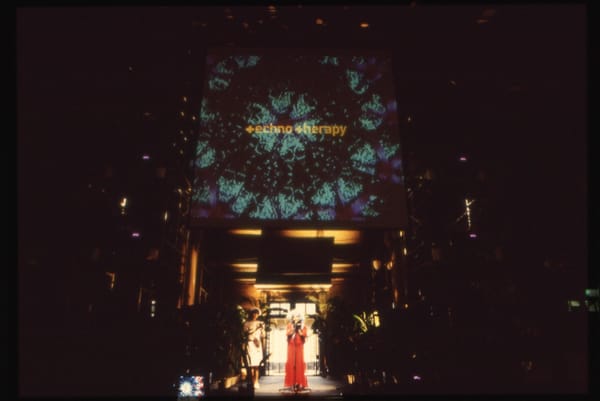Ideas
The Exhibition of Design

This is part three of a three-part report on Istanbul's newest art space. Links to the other parts can be found at the bottom of this page.

Salt’s collaborative, evolving institutional logic is well integrated into aspects of its design. The institution’s visual identity was overseen by New York-based design firm Project Projects, whose partner Prem Krishnamurthy spoke about Salt’s innovative branding scheme on April 9. Project Projects created a special all-caps typeface for Salt named Kraliçe, based on the typeface of Berlin-based Timo Gaessner called Queen that Krishnamurthy described as “geometric, clunky and techno-y.” Kraliçe, coupled with the format of its presentation (white letters on a black ground, as well as various spacing requirements) will serve as a virtual venue for designers to showcase newly commissioned fonts. Three times a year, designers will be invited to embed four letters of their own design into the Kraliçe system. On the Salt’s website, pages will be created and will remain in whatever style of Kraliçe is currently being used, so that over time the website will be a repository of the commissioned typographers’ past projects.
Salt’s system of housing specific projects (as physical or virtual exhibitions) in an accommodating structure, and leaving behind traces, has corollaries in the Beyoğlu building’s architecture. The walls of the exhibition space are made of thin plywood sheets that can flipped over from one exhibition to the next and easily, and cheaply, replaced. The informality of exposed plywood, as well as the warmth of wooden floors and walls, effectively differentiates Salt from the many new museums and commercial galleries around the world that open each year with de rigeuer gray floors and white walls.

Though Mimarlar Tasarım, the firm of architect Han Tümertekin, oversaw the renovations, other architects were invited to design specific areas, such as the Walk-in Cinema by Hakan Demirel of Suyabatmaz Demirel Architects, the bookstore by Ömer Ünal and run by local bookseller Robinson Crusoe and café, a joint undertaking by Ali Selcuk and the chef Murat Bozok. On the building’s upper floor is a garden Edible Estates Regional Prototype Garden #11: Istanbul, Turkey, planted by artist-gardener Fritz Haeg, with plants sprouting from olive oil cans and plastic cans.

Following the “Arts Viva” exhibition, the first floor space will host a series called “Modern Denemeler / Modern Essays,” with projects about modernization in Turkey. The first object destined for the space is artist Ahmet Öğüt’s Across the Slope (2008), an elongated Murat 131 sedan (similar to the Turkish Tofas car) marooned precariously on an artificial hill, and Hrair Sarkissian’s photographs of historical Istanbul archives. Another project consists of 90 days with a daily conversation or talk based around publicly generated/pooled questions about Istanbul—perhaps “What kind of fish are in the Bosphorous?” or “What’s the history of Istanbul’s highway network.” This will be supplemented by a series called Who's in Town, which are impromptu public talks in the Walk-In Cinema whenever Salt staffers can convince a visiting artist, curator, or intellectuals to drop by.

In an email, Kortun told ArtAsiaPacific that he had looked at many institutional models in thinking about Salt. He specifically named the first decade of the Centre Pompidou (1977–87) for their “oscillation between document and monument, the library for all, [and being] popular without being populist”; the Walker Art Center under Kathy Halbreich (1991–2007) for the integration of curatorial, design and education departments; Charles Esche’s recent work at the Van Abbemuseum for how “he sources the history of the institution while destabilizing it at the same time”; “e-flux as a project”; the Reina Sofia director Manolo Borja-Villel’s integration of research into an existing museum structure.
Kortun admits that there many questions about “how to scale up without going blockbuster, how to be an agile institution and incorporate different temporalities within a coherent totality.” In its physical form and programming, Salt appears to be on the verge of actualizing the kind of multidisciplinary, research-based practice that usually only individual artists, small collectives and short-lived art centers can boast about. But artists continue to be interested in both the conditions of daily life and archival practices (either in compiling them or drawing from them). Given the often porous boundaries between fields of design and art-making, Salt makes good on the idea that contemporary art can be understood as the language that connects and draws from both aesthetic traditions and political histories and puts the results into the public sphere.







